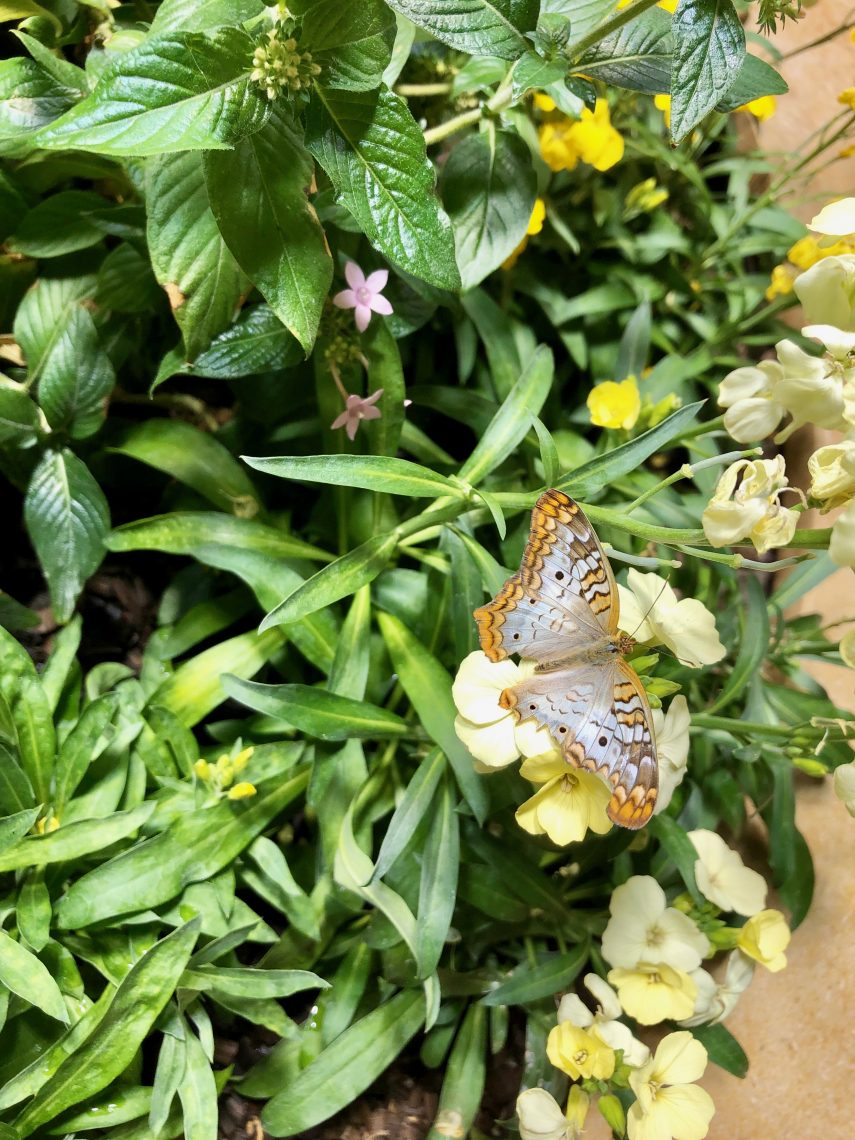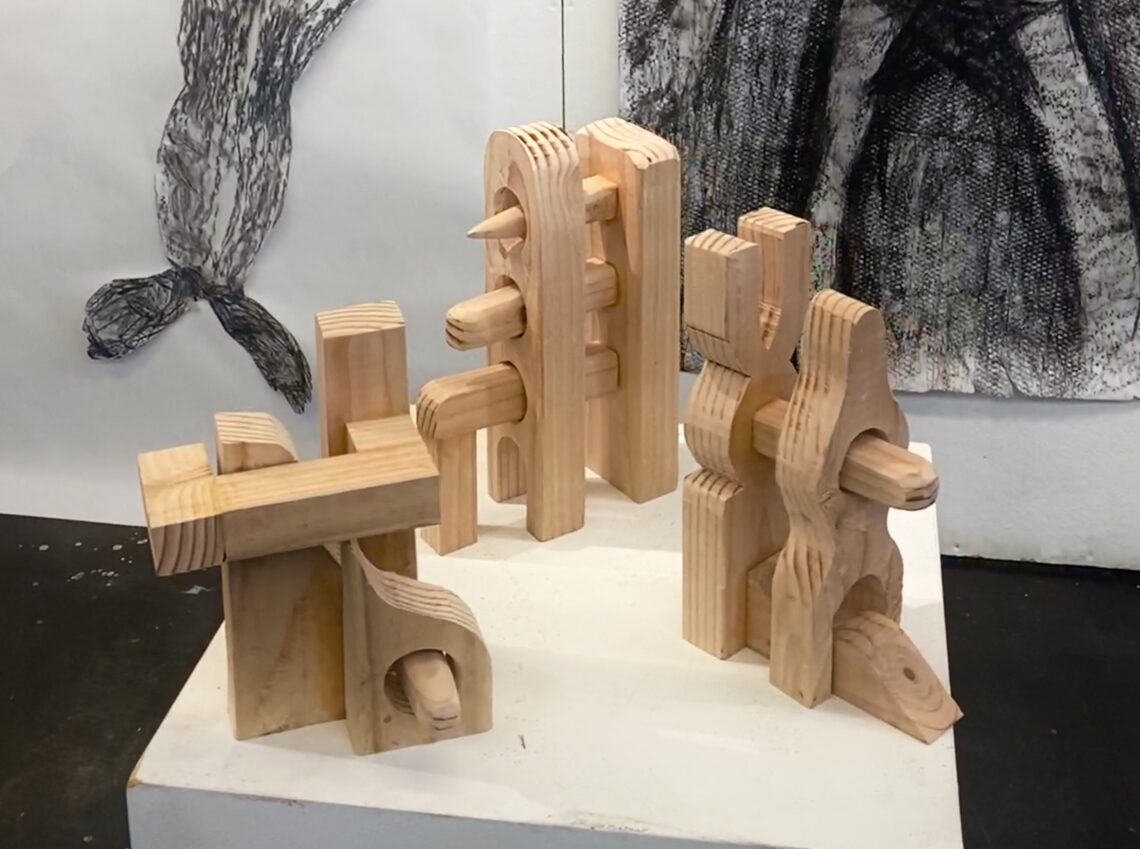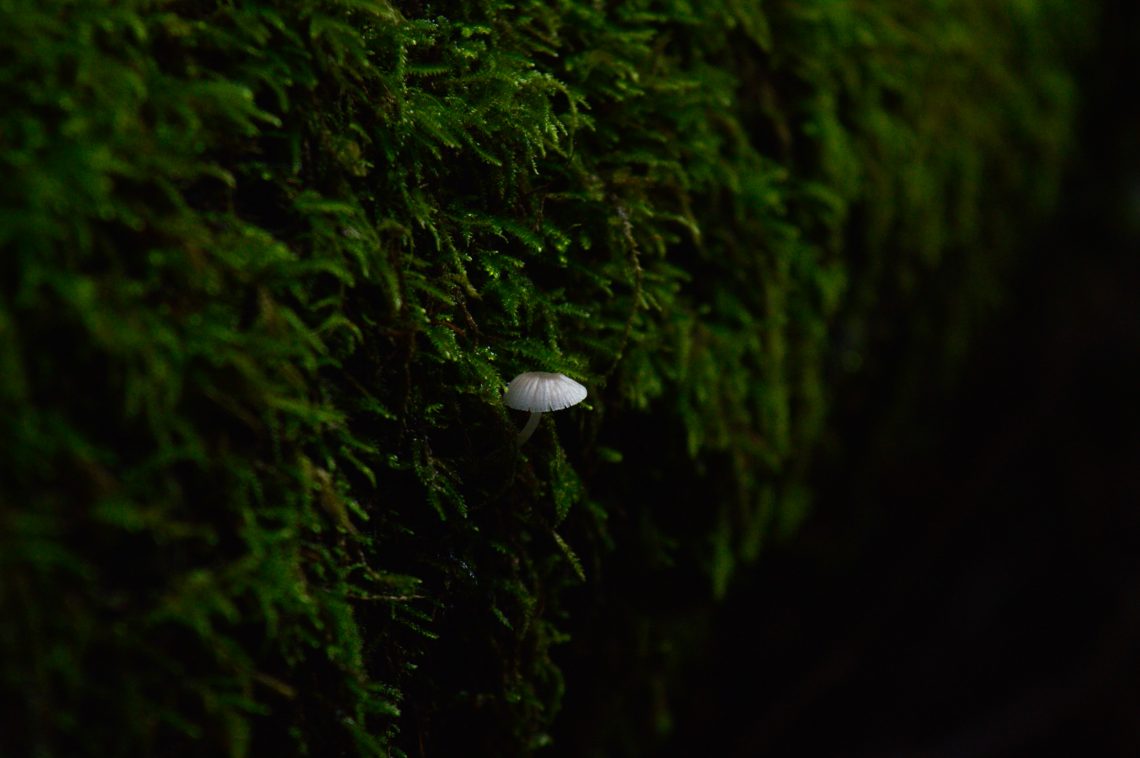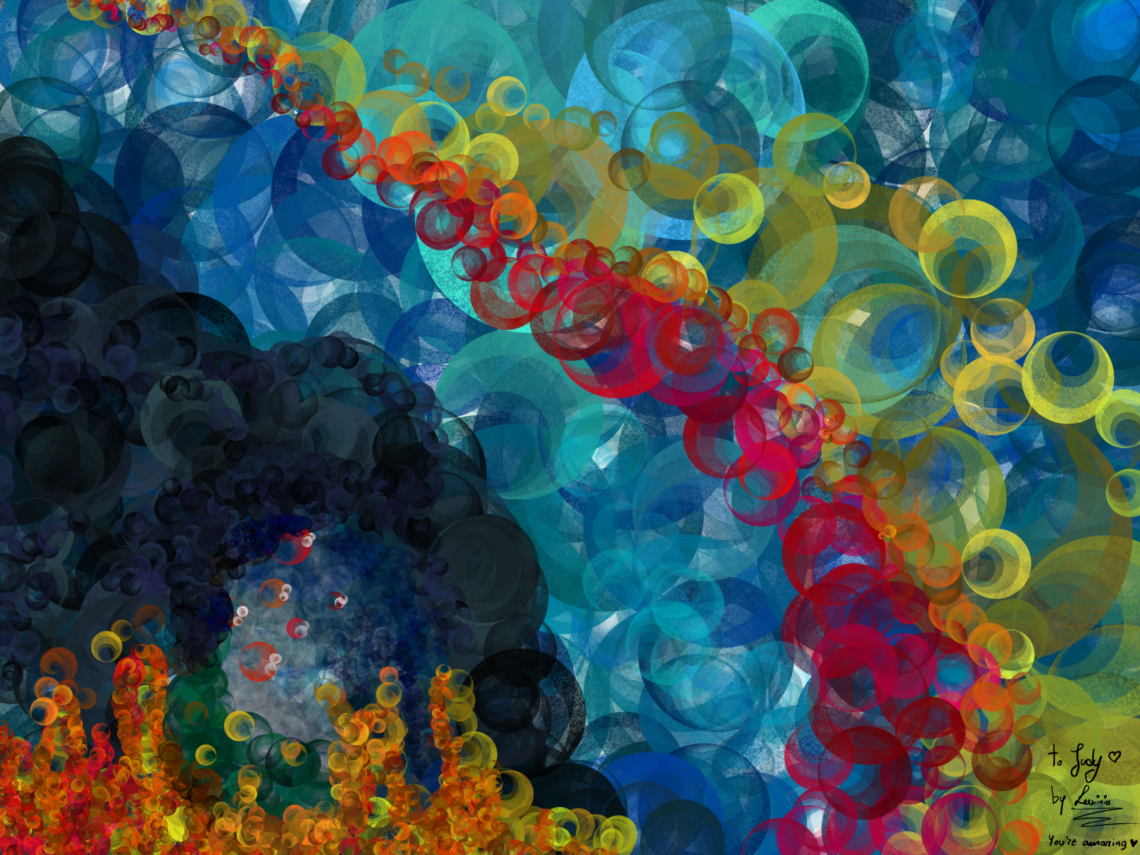
Experience
Public Art
Stanford’s campus features more than 80 works of outdoor public art, accessible to the public 365 days a year.
Recent Installations
Amulets by Alia Farid
The sculptor and filmmaker Alia Farid’s first public art commission in North America was installed earlier this month on the elevated plinth on Meyer Green between Green Library and Stanford Law School. The sculpture is composed of two large amulet forms leaning against one another, each with seven apertures, referred to as “seven eyes.” The design alludes to divination practices and beckons viewers to consider the origins of objects and artifacts in Stanford’s museums, libraries, and research centers.
This is Stanford’s second commission for the Plinth Project. Keeping company with several sculptures in the permanent public art collection installed on the adjacent lawn, Amulets will be on view for three years.
Amulets in the news:
- "Meyer Green welcomes ‘Amulets’," Stanford Report
- "Artists Alia Farid and Camille Utterback to create new campus artworks," Stanford Report
Ready to explore? Use our Public Art App to navigate Stanford’s full collection of public art.
Stanford Columns by Beverly Pepper
Standing among the stately California oaks and walking paths at the outer edge of Stanford’s vast arboretum stands a new public artwork acquisition by Beverly Pepper (1922-2020). Installed summer 2022 across Lomita Drive from the Anderson Collection, The Stanford Columns, 2022, is a gift from the Fisher Family in honor of Doris Fisher, ’53, and her lifelong friendship with the artist.
Stanford Columns in the news:
- "'Stanford Columns' expands campus arts district," Stanford Report
Tree of 40 Fruit by Sam Van Aken
Sam Van Aken's Tree of 40 Fruit is a single tree with the capacity to grow 40 different varieties of stone fruit including peaches, plums, apricots, nectarines, cherries, and almonds. Preserving heirloom and antique fruits, the Tree of 40 Fruit is artwork as a form of conservation, representing the agricultural and cultural history of California and Silicon Valley.
Narration: Andrew Catanese, MA '22 and Sam Van Aken
Film: Connor Lee O'Keefe, MFA '22, and Alexandra Stergiou, MFA '22
Tree of 40 Fruit in the news:
- "Tree at Stanford grows 40 different fruits," The Stanford Daily
Pars Pro Toto by Alicja Kwade
Stanford commissioned international artist Alicja Kwade to create a site-specific work, titled Pars pro Toto, as a surprising and provocative addition to the Science and Engineering Quad. The work is composed of twelve dazzling stone spheres sourced from eight countries, ranging in size from a diminutive 16 inches to a colossal 98 inches.
Student Perspectives
Gay Liberation
George Segal’s “Gay Liberation” commemorates the 1969 Stonewall rebellion that is often cited as the beginning of the modern gay rights movement. A casting on Stanford’s campus was installed in 1984, and today serves as a reminder that queer students at Stanford “have always been here and the presence of gay people on this campus has affected the Stanford community in a multitude of ways.”
Narration: Amir Abou-Jaoude, ‘20
Film: Connor Lee O’Keefe and Alexandra Stergiou, both MFA Documentary Film '22
Papua New Guinea Sculpture Garden
Created by artists from Papua New Guinea in 1994, the Papua New Guinea Sculpture Garden contains wood and stone carvings of people, animals, and magical beings that illustrate clan stories and creation myths.
Narration: Leonardo Lujan Orsini, '21
Film: Connor Lee O’Keefe and Alexandra Stergiou, both MFA Documentary Film '22
Cantor Collection
Learn more about the works of outdoor art in the collection of the Cantor Arts Center, including the Rodin Sculpture Garden, or join museum docents for a campus art walking tour.
Campus Public Art Proposals
Members of the Stanford community (students, faculty, and staff) can submit proposals for temporary public art projects on campus. Proposals are reviewed by the Office of the Vice President for the Arts.
Public Art Committee
Stanford’s Public Art Committee is responsible for overseeing a strategic plan for public art, including both outdoor art and art in public spaces of academic buildings and other campus facilities. The committee aims to make Stanford a destination for public art, drawing on the university’s unique natural and built environment, and to create an experience of creative vitality for all visitors to Stanford’s campus.






















